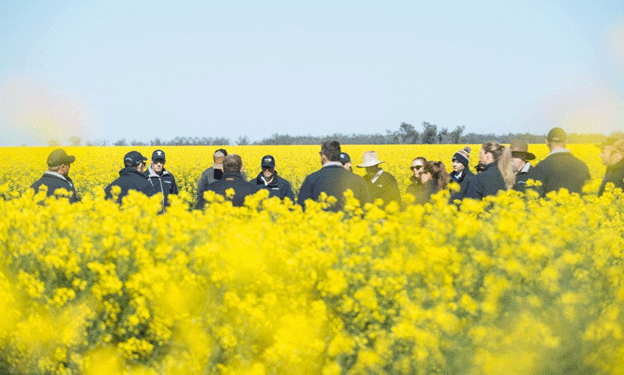ABS Unveils Top Production Areas for Wheat, Barley, and Canola: Western Australia Leads the Way
The Australian Bureau of Statistics (ABS) released new data last month, revealing the top production areas for Australia’s major winter crops in 2022-23. Western Australia (WA) holds the top positions for wheat, barley, and canola, emphasizing its dominance in the agricultural sector. The Moree region in New South Wales also ranked highly for wheat and barley production. This article explores the key findings and their implications for farmers and agricultural professionals.
Western Australia’s Dominance in Crop Production
The ABS data, released on June 14, 2024, provides a detailed look at the production statistics for Australia’s major winter crops, highlighting the leading regions. The top three statistical areas for wheat, barley, and canola are all located in WA, underscoring the state’s pivotal role in the country’s agriculture.
- Wheat: WA sold 14.7 million tonnes (Mt) of wheat in 2022-23, leading the nation. This volume constitutes a significant portion of the national total of 41.2Mt, with WA and New South Wales (NSW) together accounting for 60% of the wheat sold, valued at A$13.5 billion.
- Barley: WA also leads in barley production with 5.7Mt sold, more than double the 2.8Mt sold by South Australia, the second-highest producer. National barley sales reached 13.5Mt, valued at A$3.7 billion.
- Canola: In canola production, WA’s output was 4.1Mt, followed by NSW with 2.5Mt, contributing to the national total of 8.9Mt. The total value of the canola crop was A$6.6 billion.
Regional Insights and National Production Values
The data highlights WA’s significant contribution to national crop production, particularly in the case of canola, where eight of the top ten production areas are located within the state. This regional dominance reflects WA’s favorable growing conditions and advanced agricultural practices.
In the Moree region of NSW, notable contributions were observed for both wheat and barley, placing it fourth in national rankings for these crops. This highlights the diversity and productivity of agricultural regions across Australia.
The ABS report also includes production data for other major winter crops:
- Chickpeas: 935,000 tonnes valued at A$474 million.
- Lentils: 1.84Mt valued at A$1.36 billion.
- Lupins: 1.28Mt valued at A$362 million.
- Oats: 960,000 tonnes valued at A$251 million.
Methodology: A New Era of Agricultural Data
This release marks the first instance of agricultural statistics produced using advanced methods and data sources, including satellite-derived mapping from Digital Agriculture Services (DAS). This innovative approach allows for more accurate determination of crop types and areas, enhancing the reliability of the data.
Implications for the Agricultural Sector
For farmers, agronomists, agricultural engineers, and other stakeholders, these insights are invaluable. Understanding regional production strengths can inform strategic decisions about crop planning, resource allocation, and market targeting. The data underscores the importance of WA in Australia’s agricultural landscape and highlights opportunities for growth in other regions.
The ABS’s latest data release paints a comprehensive picture of Australia’s agricultural prowess, with Western Australia at the forefront of wheat, barley, and canola production. This information is crucial for stakeholders aiming to optimize their operations and capitalize on market opportunities. As agricultural practices evolve with new technologies and data sources, these insights will continue to drive innovation and efficiency in the sector.
Error





